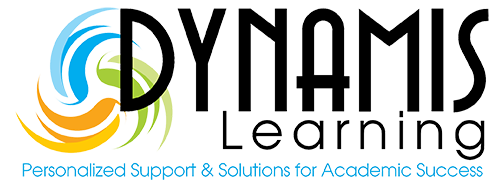 Have you ever been taking a reading test, read the passage, and then looked at the answer options and could swear they all belonged to some passage other than the one you just read? I think this has happened to every single one of us at some point. So, just how do we avoid this misaligned feeling and the accompanying panic that soon sets in? Well, that is exactly the topic for this week’s test taking tip. We’ll be discussing some effective ways to tackle reading passages and their answer options on standardized and non-standardized tests.
Have you ever been taking a reading test, read the passage, and then looked at the answer options and could swear they all belonged to some passage other than the one you just read? I think this has happened to every single one of us at some point. So, just how do we avoid this misaligned feeling and the accompanying panic that soon sets in? Well, that is exactly the topic for this week’s test taking tip. We’ll be discussing some effective ways to tackle reading passages and their answer options on standardized and non-standardized tests.
One of the first and most powerful strategies we can employ is to read the questions first. Although this may sound a bit backwards, it is actually one of the best ways to help our brains focus on what we are preparing to read. When you look at the questions before reading the passage, you enable yourself to concentrate on the most important information from the passage. Whether we realize it or not, a lot of unnecessary information is often placed in these selections, which can regularly draw our attention away from the main ideas.
Secondly, as you prepare to read the passage, be sure to underline key terms and pay special attention to questions that contain double negatives. Don’t make the mistake of highlighting practically the whole passage. This may look pretty, but it will not help you to retain focus on what you are reading. Key terms should consist of one or two words or phrases that directly relate to the content of the questions you are being asked.
Likewise, red flags should be raised in your head when you see that one or more of the questions contains a double negative. Examples such as “didn’t  dislike” or “nothing less worse” tend to confuse the reader and lead them down the wrong path. “Didn’t dislike” should actually be crossed out and “liked” could be written in its place. The same goes for “nothing less worse”. Cross out the double negative and write the positive word in its place, such as “nothing better” in this example. This type of phrasing can totally derail the intent of an answer.
dislike” or “nothing less worse” tend to confuse the reader and lead them down the wrong path. “Didn’t dislike” should actually be crossed out and “liked” could be written in its place. The same goes for “nothing less worse”. Cross out the double negative and write the positive word in its place, such as “nothing better” in this example. This type of phrasing can totally derail the intent of an answer.
Finally, remember to never choose an answer that is not supported by something in the passage or your own background knowledge. Random answers will be added to the selections that contain wording or information which cannot be found anywhere in the passage you are reading. When this is the case, automatically cross that out in your mind as an option. The whole intent of reading a passage and then answering questions based on that passage is to test your reading comprehension levels. If the answer choice has no bearing on the topic at hand, chances are it is not the correct way to go. Test makers can get tricky in this area, so be alert when you are reading and choosing an answer.
All in all, some of the reading selections you are given may be lengthy and contain much detail. Do not let this scare you. If you have read the question first, thus alerting your brain to what it’s looking for, underlined key terms in both the question and passage, paid attention to double negatives and then made sure your answer is supported by information found in the selection, you won’t fall far off the beam. Paying attention to detail and employing good reading strategies will pay off in the end and make you a better reader and test taker as well!
Click the image below to get our list of 4 test-taking strategies that can help your children do well on norm referenced tests and tests in the classroom. Every week, I will be discussing each of these four in detail.
